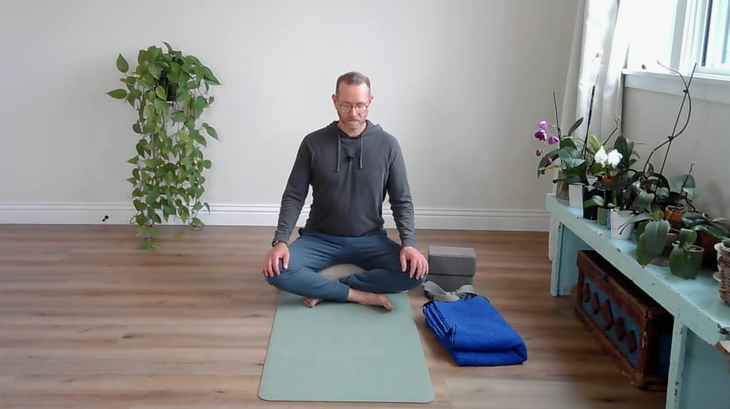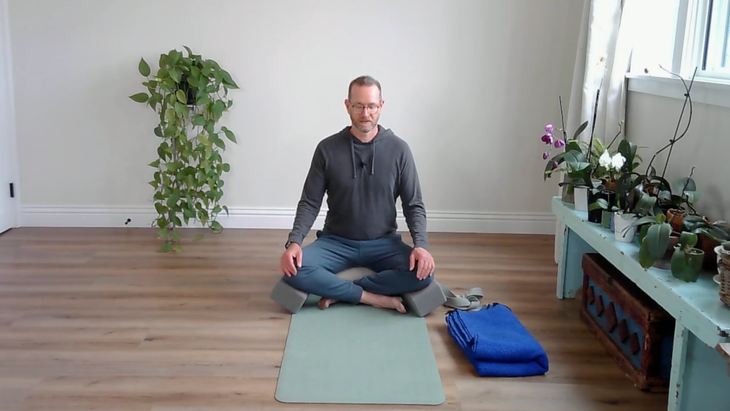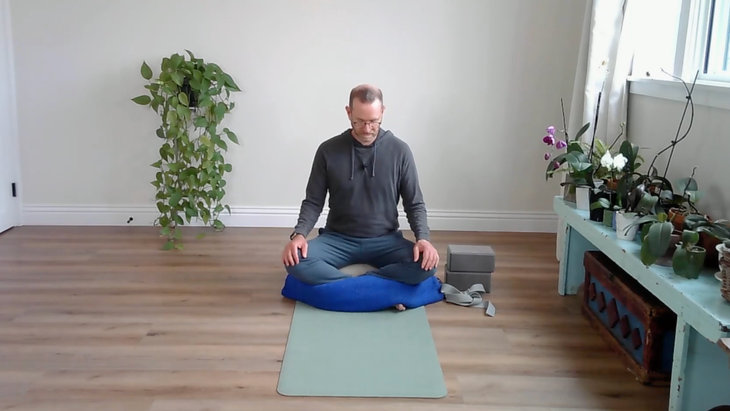“], “filter”: { “nextExceptions”: “img, blockquote, div”, “nextContainsExceptions”: “img, blockquote, a.btn, a.o-button”} }”>
Heading out the door? Read this article on the new Outside+ app available now on iOS devices for members!
>”,”name”:”in-content-cta”,”type”:”link”}}”>Download the app.
Don’t let the name fool you: Easy Pose, or Sukhasana, isn’t exactly easy. Sure, it’s a posture you’ve likely taken since childhood, seated with your legs criss-crossed in front of you. And yes, the root of the Sanskrit name is “Sukh,” which can translate to “joyful” or “happy.” But if you spend your days at a desk, have tight hamstrings, or deal with joint pain, the pose can be difficult to access.
As Easy Pose tends to be paired with meditation—which can already be challenging enough—finding a seat that’s truly comfortable is crucial. For yoga teachers like Jivana Heyman, author of Accessible Yoga: Poses and Practices for Every Body, this means supporting yourself with props, perhaps even trading Easy Pose for seated yoga poses that are better suited to your unique body.
Ultimately, the most common seated yoga pose should help you sit tall (the better to counteract days spent hunching and rounding over phones and laptops), an open chest, and a sense of effortlessness. Worry not: these variations will help you access all three elements.
5 Seated Yoga Poses That Make the Posture More Comfortable
From props on props to a switch of shape, these variations on a classic pose will help you relearn how to sit.
1. Add a Bolster

Sitting on a prop, such as a bolster, folded blankets, or a firm couch cushion is a quick and comfortable way to improve your alignment and posture in Easy Pose. Heyman notes that sitting on a bolster is especially helpful for those with tight hamstrings and lower back issues, with the cushion elevating the hips and allowing the pelvis to tilt slightly forward, offering a more natural-feeling seat.
2. Elevate Your Knees

Even perched atop a bolster, you may need some additional support. Start with blocks. Place a block beneath each knee, and, as Heyman suggests, tilt the props slightly inward toward your thighs for maximum contact and support. If you don’t have blocks, try doubled-over bed pillows or folded blankets.
3. Roll a Blanket

Hips extra tight today? Planning to sit for a long period of time? A rolled blanket or towel looped around your feet provides a soft and sturdy support system. Fold your blanket so it’s around 3 feet in length. Hold the rolled blanket in front of you and place its center on top of your feet. Then wrap the ends around your shins and tuck them beneath you or your bolster. The blanket will help elevate and support your knees while cushioning your shins from resting against the floor, removing any undue pressure.
4. Use a Yoga Strap

Sitting with the help of a strap is a time-honored tradition. “You’ll find this in ancient sculptures in India that are about 2,000 years old,” says Heyman. The prop provides lower back and lumbar support along with a hammock for the legs.
Start by securing your strap in a large loop. Take the loop over your head and around your lower back, bringing your knees up high until they are containd within—and held by—the strap. Adjust as needed. Let go of any tension in your legs and let the strap support the weight of your legs.
5. Try Kneeling

The honest truth: Easy Pose may not be for you. To better access your most supported, least anxious state, try kneeling instead. Use a folded blanket to cushion your knees, and feel free to slide a block or bolster between your feet and beneath your bum for additional support.
A proper kneeling position provides a firm base, lifting your hips and allowing the pelvis to tilt forward. Goodbye, hunch; hello open chest.

